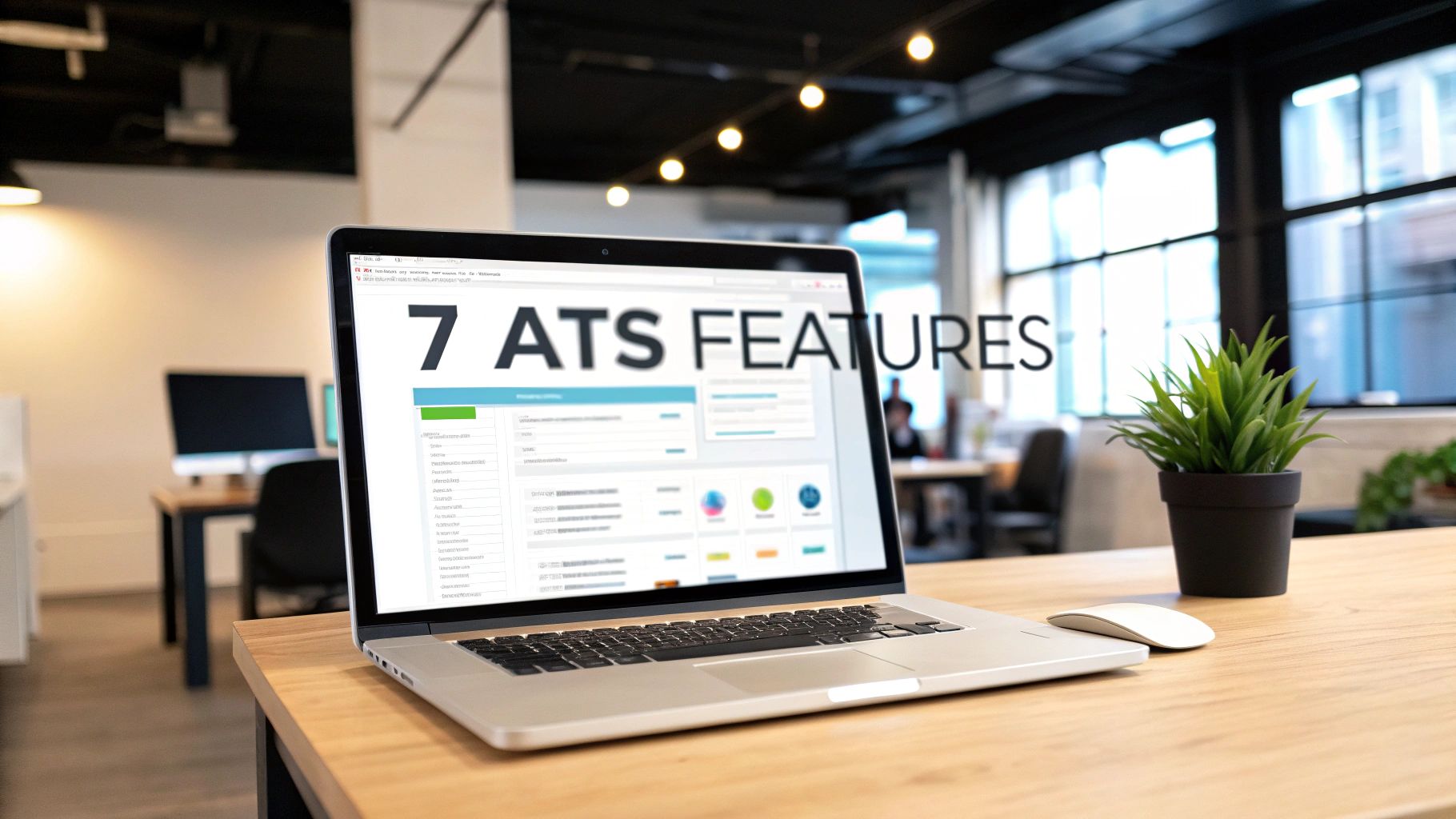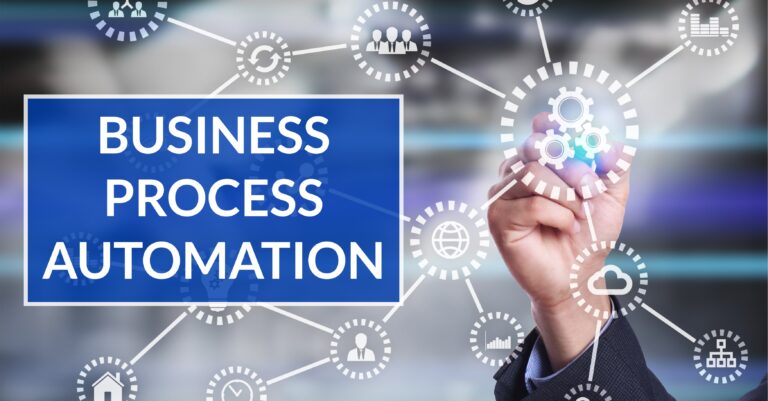7 Essential Applicant Tracking System Features for 2025
In today's competitive talent market, a basic applicant tracking system (ATS) is no longer sufficient. The right platform serves as a strategic powerhouse, automating tedious tasks and providing deep insights that transform your entire hiring process. But with a sea of options, which applicant tracking system features truly move the needle?
This guide cuts through the noise to reveal the essential capabilities that streamline workflows, enhance the candidate experience, and deliver a measurable return on investment. We'll explore the core functionalities every modern ATS should possess, from AI-powered sourcing and automated interview scheduling to seamless third-party integrations. Understanding these features is critical to choosing a system that not only manages applicants but actively helps you build your dream team.
We will provide a detailed breakdown of must-have features, using examples from top platforms like Greenhouse, Lever, and iCIMS. We'll also consider how comprehensive automation solutions like MakeAutomation can revolutionize your hiring systems from the ground up. To truly unlock hiring excellence, understanding the landscape of available solutions is key; explore comprehensive reviews of the 12 Best ATS Software Options for Smarter Hiring in 2025 to guide your decision-making.
1. MakeAutomation | AI & Automation optimization
MakeAutomation presents a paradigm shift from traditional applicant tracking systems by offering a comprehensive, AI-driven hiring system designed for automation and efficiency. Instead of merely tracking applicants, it proactively sources, engages, and assesses candidates, positioning itself as an end-to-end talent acquisition engine. This platform is particularly powerful for B2B and SaaS companies that require scalable, tech-forward solutions to attract top-tier talent without the manual overhead.
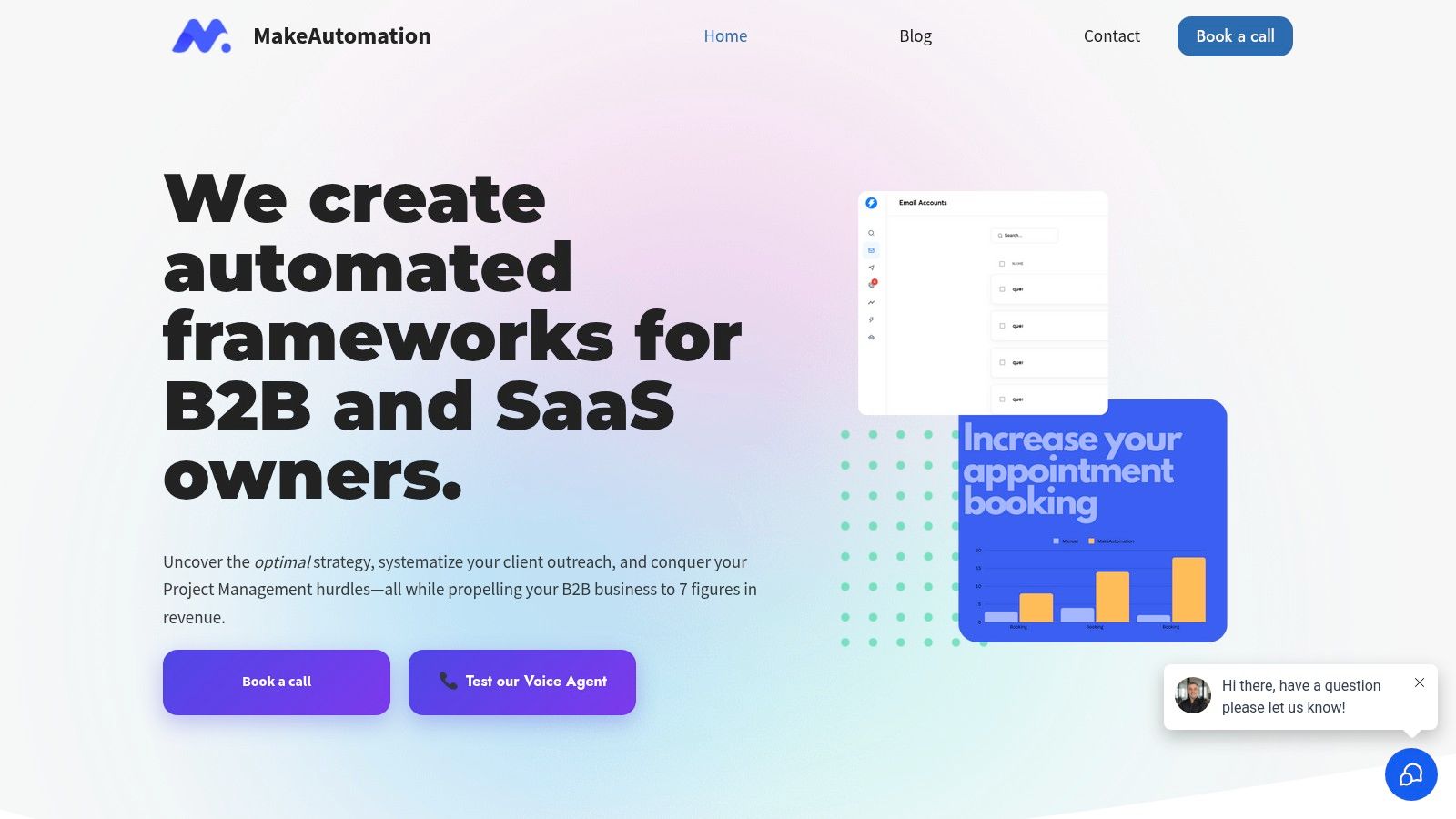
The core strength of MakeAutomation lies in its ability to transform the entire recruitment lifecycle. It leverages sophisticated AI to intelligently find and connect with ideal candidates across various platforms, effectively building a robust pipeline on autopilot. The system then automates engagement and initial screening, ensuring that only the most qualified prospects land directly in your inbox for final consideration. This intelligent filtering is a game-changer, eliminating countless hours spent on manual resume reviews and outreach.
Key Features and Strengths
MakeAutomation distinguishes itself with a suite of applicant tracking system features that go far beyond standard offerings. Its holistic approach integrates recruitment into a broader operational automation framework.
- AI-Powered Sourcing and Engagement: The system autonomously identifies and contacts high-potential candidates, personalizing outreach to maximize response rates.
- Intelligent Candidate Assessment: AI algorithms pre-screen applicants based on customized criteria, ensuring a high-quality shortlist is delivered directly to hiring managers.
- End-to-End Automation: Beyond recruitment, it offers tailored frameworks for lead generation, CRM automation, and project management, creating a unified, efficient operational ecosystem.
- Voice AI Integration: A standout capability includes the use of voice AI agents for both inbound and outbound calls, which can handle initial screenings or follow-ups, further enhancing productivity.
- Hands-On Implementation Support: MakeAutomation provides comprehensive documentation and direct support to ensure seamless integration and customization of its complex workflows. For those looking to delve deeper into AI's role in hiring, you can learn more about the best AI tools for recruitment.
Unique Value Proposition
Unlike standalone ATS platforms, MakeAutomation functions as a strategic growth partner. Its focus on eliminating manual tasks and integrating hiring into the larger business automation strategy provides a significant competitive advantage. While the initial setup may require an investment of time to tailor workflows, the long-term ROI from reclaimed productivity and accelerated hiring cycles is substantial. This makes it an exceptional choice for businesses aiming to scale operations efficiently.
- Website: https://makeautomation.co/
- Best For: B2B and SaaS companies focused on scalable growth and operational excellence.
- Key Differentiator: A fully automated hiring engine that integrates with broader business process automation, including CRM and client outreach.
2. Greenhouse
Greenhouse stands out as a comprehensive hiring platform designed to enforce structure and consistency across the entire recruitment lifecycle. It's particularly well-suited for mid-market and enterprise companies that need a scalable, data-driven approach to talent acquisition. The platform's core philosophy revolves around "structured hiring," a methodology that uses predetermined questions, consistent evaluation criteria, and collaborative scorecards to mitigate bias and improve hiring outcomes.
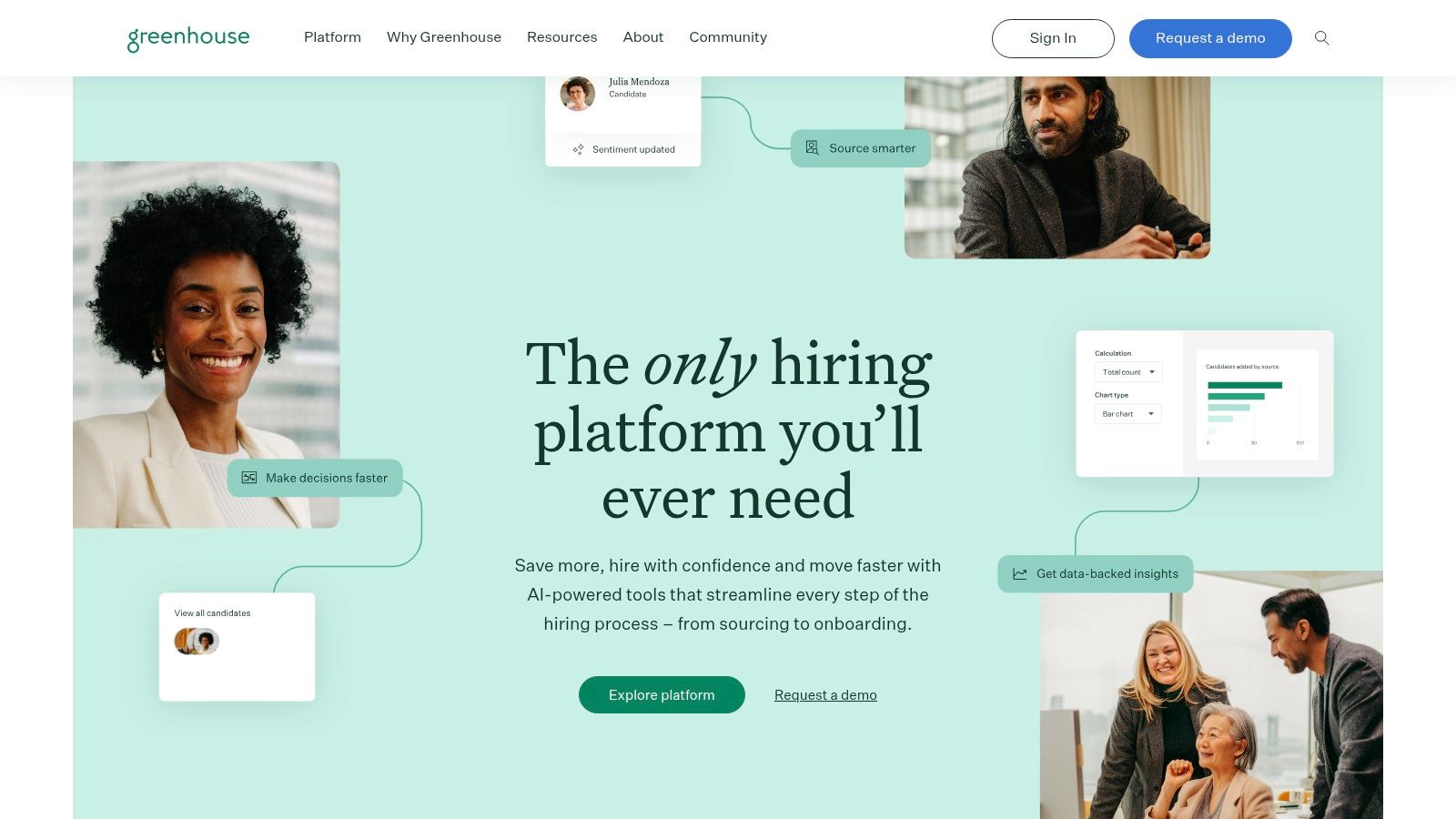
This structured process is one of the most powerful applicant tracking system features available, moving recruitment away from gut feelings toward objective, repeatable success. For instance, hiring managers can build interview kits with specific questions and attributes to assess for each role, ensuring every candidate receives a fair and standardized evaluation.
Key Features and Benefits
Greenhouse excels in its robust integration capabilities and candidate-centric tools. With over 500 pre-built integrations, it connects seamlessly with HRIS, background check providers, assessment tools, and sourcing platforms.
- Extensive Integration Ecosystem: Its open API and vast partner marketplace allow teams to build a custom, end-to-end tech stack without cumbersome workarounds. This is a significant advantage for organizations that already use specialized tools like Goodhire for background checks or HackerRank for technical assessments.
- Candidate Experience Portal (MyGreenhouse): This feature enhances transparency by giving candidates a dedicated portal to track their application status, see upcoming interviews, and view feedback. This reduces the administrative burden on recruiters who would otherwise spend hours sending manual status updates.
- Advanced Analytics and Reporting: The platform offers in-depth reporting on source effectiveness, time-to-hire, and interview pipeline health. A practical use case is leveraging source tracking links with LinkedIn paid ads to directly measure the ROI of specific campaigns.
| Feature Comparison | Greenhouse | Other Enterprise ATS |
|---|---|---|
| Hiring Methodology | Emphasizes structured hiring with scorecards and interview kits. | Often more flexible, which can lead to inconsistency. |
| Candidate Portal | Yes (MyGreenhouse) | Varies; often less comprehensive or non-existent. |
| Integration Depth | 500+ pre-built integrations and a robust open API. | Typically offers fewer native integrations, relying more on custom API work. |
| Pricing Transparency | Not public; requires a sales consultation. | Varies, but custom quotes are common in the enterprise segment. |
Pros and Cons
Pros:
- Deep integration ecosystem with the US hiring tech stack.
- The "MyGreenhouse" candidate portal improves the candidate journey.
- Excellent documentation and support resources for enterprise users.
Cons:
- Pricing is not publicly available and requires sales engagement.
- Its enterprise-grade features may be overly complex for small startups.
Website: https://www.greenhouse.com
3. Lever
Lever stands out by merging traditional applicant tracking with robust candidate relationship management (CRM) into a single, unified platform called LeverTRM. This integrated approach is designed for modern talent teams that prioritize proactive sourcing and nurturing candidate pipelines over time. It’s particularly effective for companies in competitive industries that need to build and maintain relationships with passive talent.
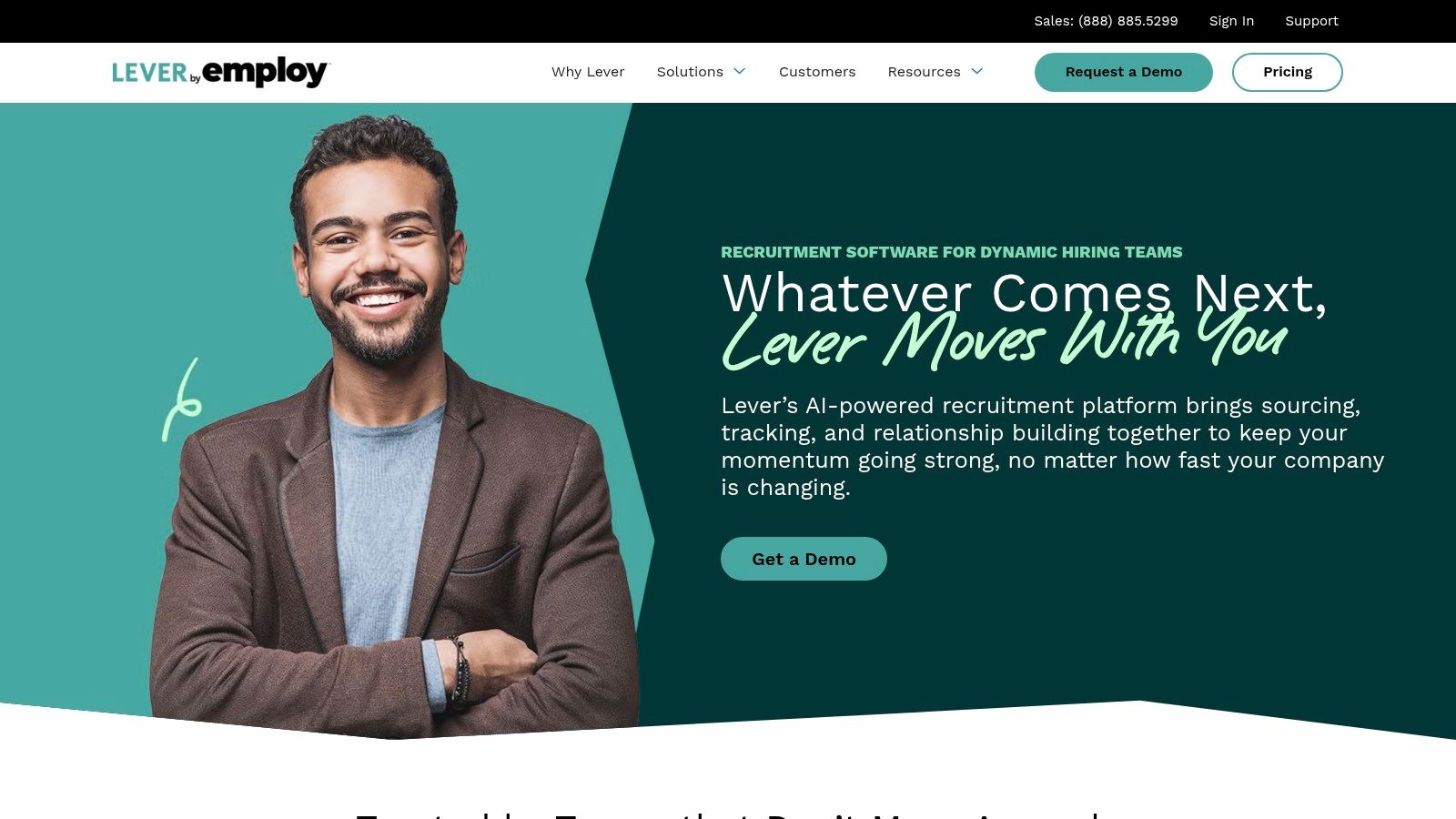
The platform's native CRM capabilities are one of its most powerful applicant tracking system features, allowing recruiters to manage talent pools, run drip campaigns, and re-engage past applicants seamlessly. For example, a recruiter can create a "silver medalist" talent pool and send automated, personalized check-in emails every few months, keeping top candidates warm for future openings without manual effort.
Key Features and Benefits
Lever focuses on creating an efficient, end-to-end talent acquisition workflow, enhanced with AI and strategic partnerships. Its features are built to streamline sourcing, interviewing, and analytics within one intuitive interface.
- Unified ATS + CRM: This core functionality enables teams to track active applicants while simultaneously building and nurturing long-term talent pipelines. Recruiters can easily convert prospects from sourcing events into candidates and track all interactions in a single profile.
- AI-Powered Interview Tools: Lever offers AI-generated interview transcripts and summaries, which helps standardize evaluation and reduce manual note-taking (initially US-only). This allows hiring managers to quickly review key discussion points without re-watching entire interview recordings.
- Monetized Job Promotion: Through a partnership with VONQ CPA+ powered by LinkedIn, Lever provides a clear, flat-fee model for job advertising campaigns. This feature simplifies budget management and uses AI prescreening to optimize ad spend.
| Feature Comparison | Lever | Other Integrated ATS/CRMs |
|---|---|---|
| Core Functionality | Fully unified ATS and CRM in one platform. | Often separate modules or require third-party CRM integrations. |
| AI Features | Offers AI-generated interview transcripts and summaries. | Varies; may focus on resume parsing or candidate matching. |
| Job Promotion | Integrated, monetized CPA+ model with LinkedIn. | Typically relies on standard job board integrations. |
| Pricing Transparency | Quote-based; requires a sales consultation. | Mixed; some offer tiered public pricing, others are quote-based. |
Pros and Cons
Pros:
- Strong pipeline CRM for nurturing candidate relationships.
- Clear and monetized job-promotion option for predictable budgeting.
- Active feature release cadence and a transparent Help Center.
Cons:
- Pricing is not publicly listed and requires a custom quote.
- Some advanced AI features are region-limited or still being rolled out.
Website: https://www.lever.co
4. iCIMS
iCIMS offers an enterprise-grade recruiting platform within its broader Talent Cloud, specifically engineered for high-volume, complex hiring at large organizations. It's a powerhouse for companies that require a centralized, compliant, and highly configurable talent acquisition system to manage intricate recruitment processes across different departments and global locations. The platform is built to handle scale, ensuring that even with thousands of applications, workflows remain organized and auditable.
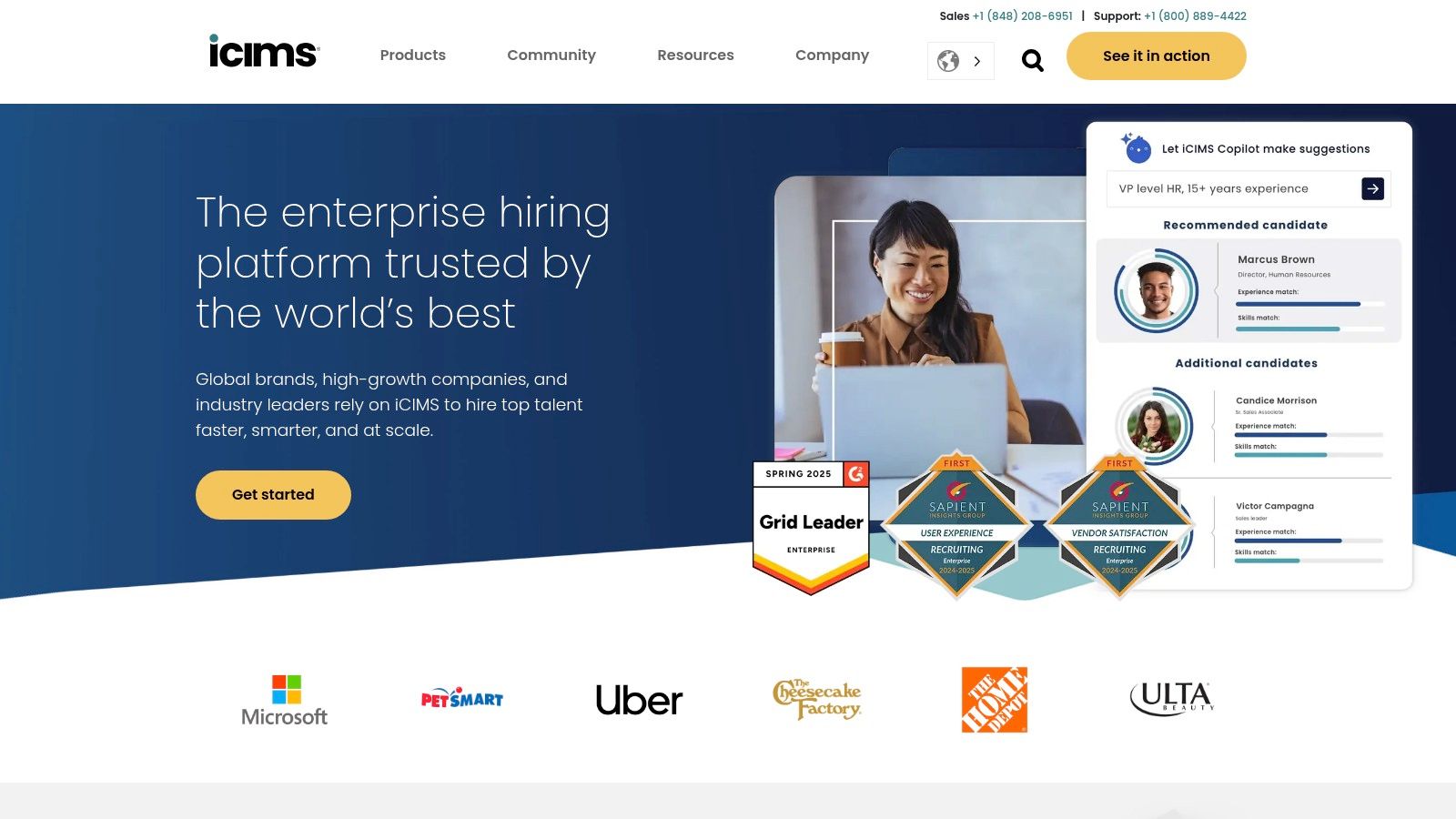
The platform’s strength lies in its configurable workflows, which is one of the most critical applicant tracking system features for enterprises. For example, a global corporation can design distinct approval chains and job templates for its engineering division in North America versus its sales team in Europe, all within a single system. This level of customization ensures adherence to regional compliance and internal policies, a cornerstone of effective talent acquisition best practices.
Key Features and Benefits
iCIMS excels with its robust AI capabilities and one of the largest partner ecosystems in the industry, allowing for deep integration with core HR systems. This makes it a central hub for all talent-related activities.
- AI-Powered Candidate Matching: The system uses AI to suggest, rank, and match candidates from the existing talent pool to new job openings. This saves recruiters significant time by surfacing qualified, previously vetted applicants who might otherwise be overlooked.
- Massive Integration Marketplace: With over 750 partner integrations, iCIMS connects seamlessly with major HCM/HRIS platforms like Workday, SAP, ADP, and Oracle. This ensures data flows smoothly between recruiting and other HR functions like payroll and onboarding.
- Advanced Analytics and Compliance: The platform provides comprehensive reporting dashboards to track key metrics like time-to-fill, source effectiveness, and DEI goals. These tools are crucial for large US enterprises needing to maintain OFCCP and EEO compliance.
| Feature Comparison | iCIMS | Other Enterprise ATS |
|---|---|---|
| Target Audience | High-volume, enterprise-level organizations with complex needs. | Varies; some focus on mid-market or specific industries. |
| Workflow Flexibility | Highly configurable with custom fields, workflows, and approval chains. | Often less customizable, offering more standardized processes. |
| Integration Depth | 750+ partners, especially strong with major HCM/HRIS systems. | Typically offers a smaller marketplace of pre-built integrations. |
| AI Capabilities | Strong focus on AI for candidate matching, ranking, and engagement. | AI features are common but may be less mature or comprehensive. |
Pros and Cons
Pros:
- Highly suited to US enterprises with complex global hiring and compliance needs.
- Extensive partner marketplace to tailor technology stacks.
- Robust analytics for data-driven decision-making and compliance reporting.
Cons:
- Pricing is not publicly available and typically involves lengthy sales cycles.
- Potentially too complex or feature-rich for SMBs or smaller teams.
Website: https://www.icims.com
5. Workable
Workable has carved out a strong niche as the go-to applicant tracking system for small to mid-sized businesses (SMBs) and growing companies that prioritize speed and transparency. Its major differentiator is the straightforward, self-serve purchasing model, complete with a 15-day free trial, which lets teams get up and running without lengthy sales consultations. The platform offers a clean, user-friendly interface that balances powerful recruiting tools with essential HR functions.
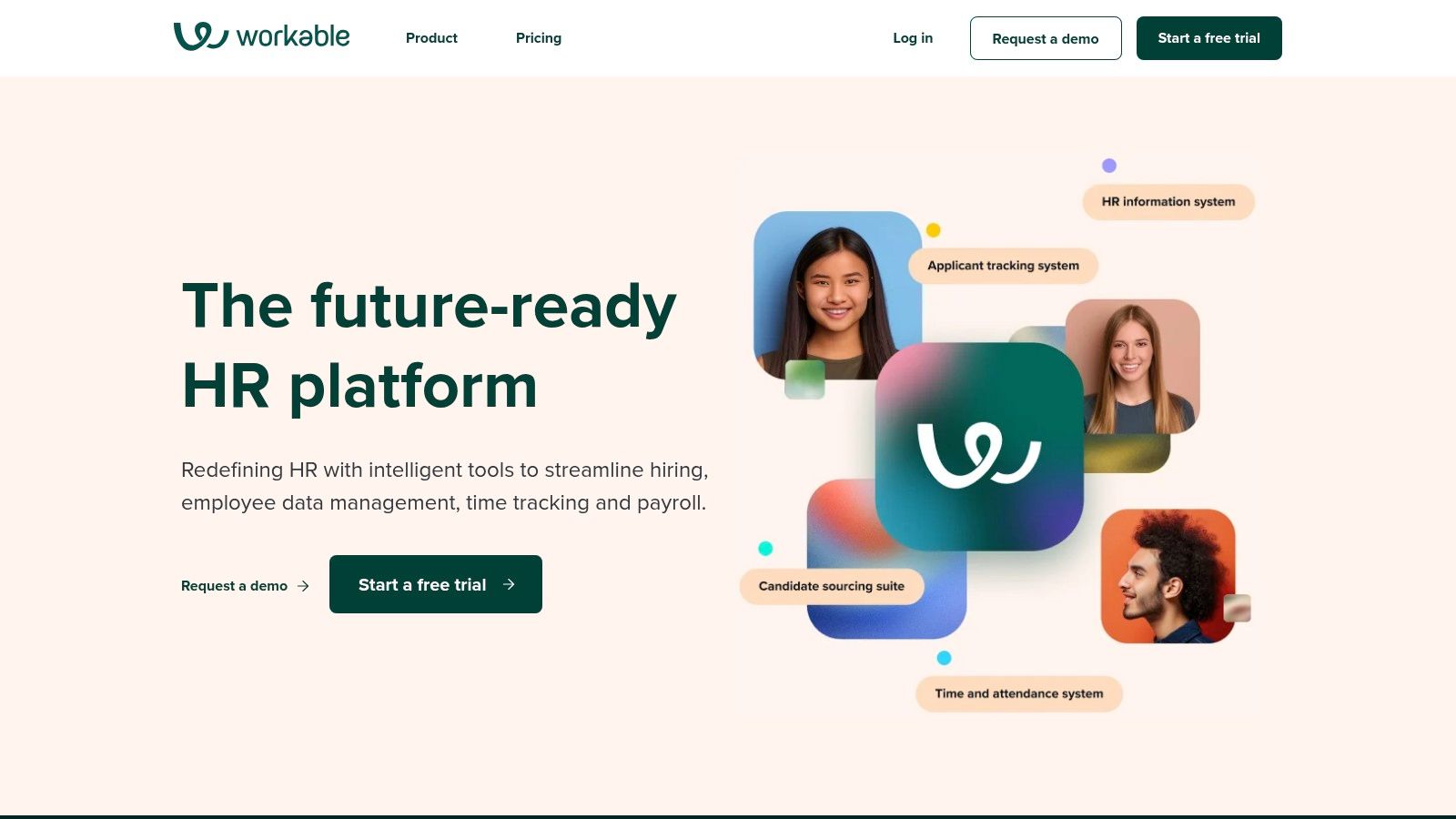
This accessibility makes it one of the most practical platforms for teams that need immediate results. One of Workable's most valuable applicant tracking system features is its one-click job posting to over 200 job boards, including premium sites like LinkedIn and Indeed. This massive distribution network, combined with an AI-powered screening assistant, helps recruiters quickly build a qualified talent pipeline from a single dashboard. For companies looking to enhance their tech stack further, modern tools can integrate with platforms like Workable, and you can learn more about AI-powered workflow automation.
Key Features and Benefits
Workable excels by bundling core recruiting necessities with optional, advanced add-ons. This allows businesses to scale their capabilities as their hiring needs evolve. Its built-in scheduling, interview scorecards, and reporting tools provide a solid foundation for any talent acquisition team.
- Broad Job Distribution: The platform’s ability to instantly syndicate job postings across hundreds of channels saves countless hours of manual work and maximizes visibility for every open role. A practical use case is posting a niche technical role and letting Workable automatically push it to specialized engineering job boards alongside general ones.
- Integrated HRIS-Lite Functions: Workable includes basic HR tools like onboarding checklists, employee profiles, time-off tracking, and e-signatures. This turns it into an all-in-one solution for SMBs that are not yet ready for a full-blown, separate HRIS.
- A La Carte Premium Tools: Teams can add specific functionalities like Texting, Video Interviews, and Assessments as needed. This modular approach prevents companies from paying for enterprise-grade features they don't use, offering a more cost-effective path to scaling.
| Feature Comparison | Workable | Other SMB ATS |
|---|---|---|
| Pricing Model | Transparent, public pricing with a free trial. | Often requires a sales demo for a custom quote. |
| Job Posting | One-click distribution to 200+ job boards. | Typically offers fewer native job board integrations. |
| HR Features | Includes basic HRIS-lite functions (onboarding, time-off). | Usually focuses exclusively on recruiting without HR extras. |
| Setup & Deployment | Designed for rapid, self-serve setup. | Can require more intensive implementation support. |
Pros and Cons
Pros:
- Clear, published pricing and an easy online purchase process.
- Fast setup and strong out-of-the-box features for growing teams.
- Excellent job board syndication network.
Cons:
- Some advanced capabilities require higher-tier plans or additional fees.
- May lack the depth for very complex enterprise workflows or compliance needs.
Website: https://www.workable.com
6. JazzHR
JazzHR is an applicant tracking system designed with the needs of small and medium-sized businesses (SMBs) in mind. It stands out for its transparent pricing and user-friendly interface, offering a straightforward yet powerful solution for companies that need to streamline their hiring process without the complexity of an enterprise-level platform. The platform focuses on core ATS functionalities that provide immediate value, such as job syndication, candidate management, and collaborative hiring workflows.
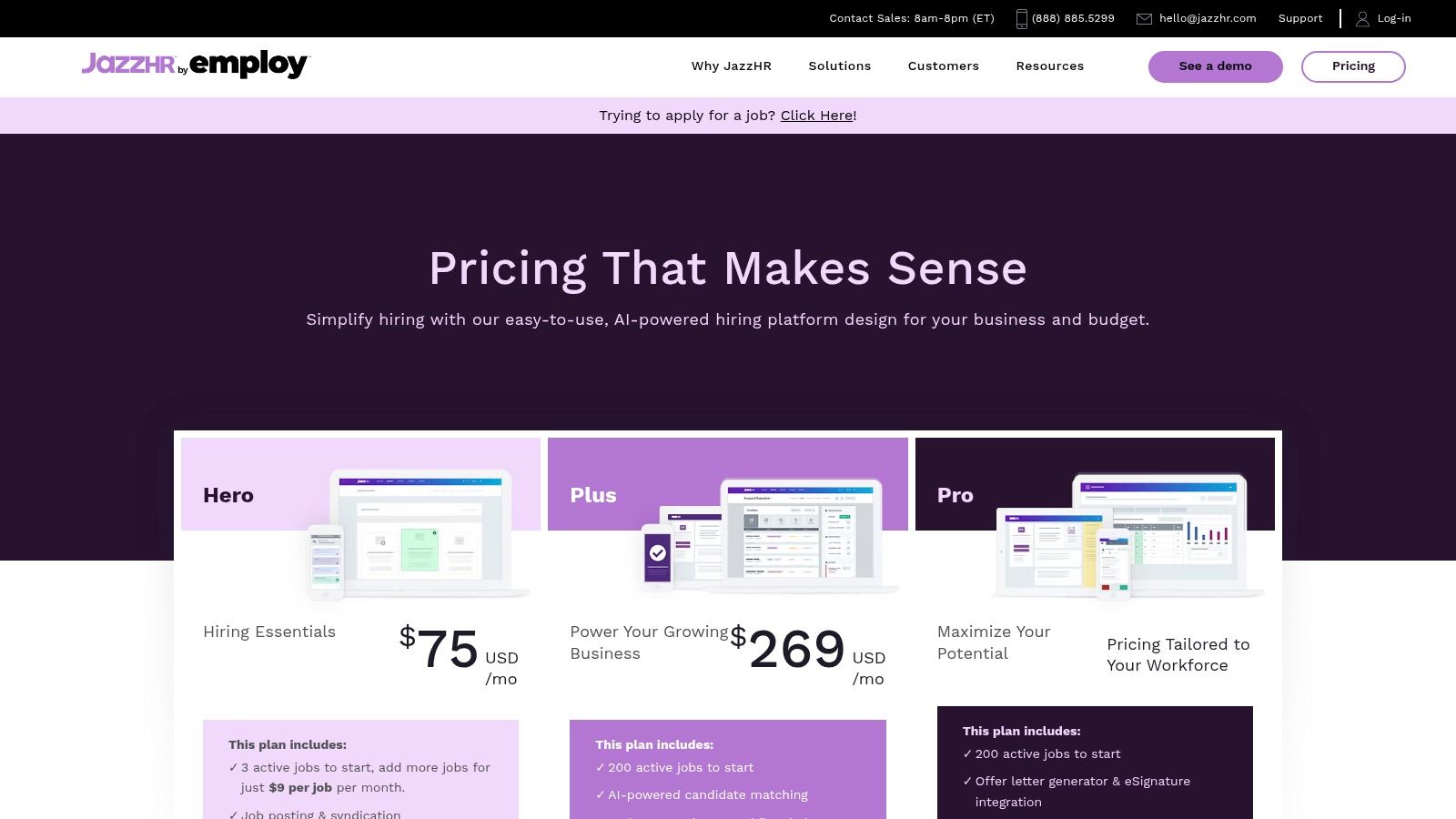
This focus on simplicity and transparency makes it one of the most accessible applicant tracking system features packages on the market. For a small business owner, the ability to see clear plan tiers and predict monthly costs is a significant advantage. A practical example is a growing startup that can start with the basic "Hero" plan and then scale to the "Pro" plan for more advanced features like AI-powered candidate matching as its hiring volume increases.
Key Features and Benefits
JazzHR's strength lies in its ability to automate essential recruiting tasks and enhance team collaboration. Its features are designed for quick adoption, allowing smaller HR teams or hiring managers to get up and running with minimal training.
- Job Posting and Syndication: The platform automatically posts open roles to a wide range of free and premium job boards, including Indeed, LinkedIn, and ZipRecruiter. This eliminates the manual effort of posting to each site individually, saving significant time.
- Customizable Workflows and Automation: Users can create custom hiring stages for different roles and set up automated actions, such as sending rejection emails or scheduling screening calls. This ensures a consistent process and keeps candidates informed.
- Add-On Candidate Engagement Tools: JazzHR offers optional add-ons for features like candidate texting and enhanced employer branding. This allows businesses to pay only for the advanced features they need, such as using texting to quickly communicate with candidates in high-turnover industries.
| Feature Comparison | JazzHR | Other SMB ATS |
|---|---|---|
| Pricing Model | Transparent, tiered pricing publicly displayed on the website. | Often requires a sales demo or consultation for a custom quote. |
| Target Audience | Primarily focused on US-based small and medium-sized businesses. | Can be more general or focused on specific international markets. |
| Core Functionality | Strong focus on job syndication, workflows, and collaborative hiring. | May offer more niche features but can be more complex to set up. |
| Scalability | Simple plan upgrades and optional add-ons for growing teams. | Varies; some may have more rigid plans or complex upgrade paths. |
Pros and Cons
Pros:
- Transparent, easy-to-understand pricing tailored for small US businesses.
- Simple plan structures with clear explanations and usage guidance.
- User-friendly interface that is easy to implement and navigate.
Cons:
- Larger companies may require custom pricing or find the plans too restrictive.
- The feature set may be less comprehensive compared to enterprise-focused platforms.
Website: https://www.jazzhr.com/pricing/
7. Capterra
While not an ATS itself, Capterra is an indispensable resource for discovering and comparing different platforms. It functions as a comprehensive software marketplace, allowing HR and talent acquisition teams to filter, analyze, and shortlist hundreds of ATS options based on their specific needs. This makes it a crucial first step in the buying journey, especially for companies unsure of which applicant tracking system features are most important for their scale and industry.
Capterra's value lies in its structured data and verified user reviews, which provide a powerful, at-a-glance comparison of the market. Instead of visiting dozens of vendor websites, teams can use its powerful filtering tools to narrow down choices by company size, deployment type (cloud or on-premise), and essential features like interview scheduling or compliance management. This process dramatically reduces research time and helps identify the top contenders quickly.
Key Features and Benefits
Capterra excels at consolidating market information and user feedback into a digestible, actionable format. Its platform is built to guide buyers from initial discovery to final selection with data-driven tools.
- Advanced Filtering and Comparison: Users can filter the extensive list of ATS products by must-have features, pricing models, and target business size. For example, a startup could filter for systems under $100/month with built-in candidate sourcing tools, instantly creating a manageable shortlist.
- Verified User Reviews: The platform gathers authentic reviews from real users, offering insights into usability, customer support quality, and the real-world performance of key features. This peer-generated feedback is often more valuable than vendor marketing materials.
- Up-to-Date Buyer Guides: Capterra publishes detailed guides and articles that explain market trends, pricing expectations, and core functionalities. These resources educate buyers, helping them make more informed decisions when comparing complex enterprise systems.
| Feature Comparison | Capterra | Direct Vendor Research |
|---|---|---|
| Vendor Scope | Hundreds of ATS options in one place for side-by-side comparison. | Limited to one vendor at a time; requires multiple tabs and sites. |
| User Feedback | Aggregated, verified user reviews and ratings are prominently displayed. | Relies on curated testimonials or case studies provided by the vendor. |
| Filtering Tools | Yes; robust filtering by features, price, and company size. | No; users must manually search each site for specific information. |
| Pricing Transparency | Provides estimated pricing ranges based on market data. | Varies; many vendors hide pricing behind a sales consultation. |
Pros and Cons
Pros:
- Saves significant time by consolidating ATS options with comparative filters and reviews.
- Broad coverage of the ATS market, including both new and established tools.
- Verified user reviews provide authentic insights into product performance.
Cons:
- Marketplace data may occasionally lag behind vendor sites for new features or promotions.
- Sponsored placements can influence the order of listings, so users should verify independently.
Website: https://www.capterra.com/applicant-tracking-software/
Applicant Tracking Systems Feature Comparison
| Product | Implementation Complexity | Resource Requirements | Expected Outcomes | Ideal Use Cases | Key Advantages |
|---|---|---|---|---|---|
| MakeAutomation | AI & Automation optimization | Moderate; setup and customization needed | Streamlined recruitment and automated workflows | B2B & SaaS companies scaling operations | End-to-end AI-driven hiring and automation; voice AI agents; hands-on support |
| Greenhouse | High; enterprise-level integrations | High; requires dedicated admin | Structured hiring with deep analytics | Enterprise and large organizations | Extensive integrations; candidate portal; mature support |
| Lever | Moderate to high; modern ATS+CRM integration | Moderate to high; ongoing feature rollout | Enhanced candidate nurturing and sourcing | Teams needing unified ATS+CRM solutions | Integrated ATS+CRM; AI interview transcripts; job promotion via LinkedIn |
| iCIMS | High; configurable workflows and compliance | High; suited for enterprise IT | Centralized, compliant talent management | Large enterprises with complex hiring | Extensive partner ecosystem; AI matching; compliance tracking |
| Workable | Low to moderate; easy online setup | Low to moderate; self-serve purchase | Rapid recruitment with basic HR features | SMB and mid-market companies | Transparent pricing; quick setup; 200+ job boards |
| JazzHR | Low; straightforward plans and set up | Low; SMB-focused | Core ATS functions with easy implementation | Small US businesses | Transparent pricing; simple plans; quick deployment |
| Capterra | N/A; marketplace platform | Minimal; user-driven | Simplified ATS comparison and selection | Buyers researching ATS software | Comprehensive filters; buyer guides; direct vendor links |
From Features to Frameworks: Building Your Ultimate Hiring Engine
Throughout this guide, we've explored the diverse landscape of applicant tracking system features, from the robust enterprise solutions of iCIMS and Greenhouse to the SMB-friendly platforms like Workable and JazzHR. We've seen how features like automated candidate sourcing, collaborative hiring tools, and powerful analytics can fundamentally reshape the recruitment process. Each tool offers a unique set of capabilities designed to bring efficiency and order to the often-chaotic world of talent acquisition.
However, the most critical takeaway is not which individual platform has the longest feature list. True recruitment transformation happens when you move beyond isolated features and start building an integrated, automated hiring framework. The goal is to create a seamless operational engine where technology handles the repetitive, time-consuming tasks, freeing your team to focus on strategic human interactions.
Key Takeaways for Building Your System
As you evaluate your options, remember that the "best" ATS is the one that aligns with your unique operational needs and growth trajectory.
- Define Your Core Needs: Are you a high-volume recruiter needing powerful pipeline management like Lever, or a startup prioritizing speed and simplicity with a tool like JazzHR? Clearly define your non-negotiable requirements before you start comparing solutions.
- Prioritize Integration and Automation: A standalone ATS can quickly become another data silo. The real power lies in its ability to connect with your entire HR and business tech stack. The most advanced applicant tracking system features are those that enable end-to-end automation, from initial job posting to final onboarding.
- Think Beyond Tracking: Modern recruitment is about proactive talent engagement, not passive applicant tracking. Look for features that support candidate relationship management (CRM), talent pooling, and automated communication campaigns. This shifts your team from a reactive to a proactive hiring model.
Your Actionable Next Steps
Armed with this knowledge, your next step is to audit your current hiring process. Identify the biggest bottlenecks, manual data entry points, and communication gaps. Where are you losing the most time? Where are candidates dropping off? Answering these questions will illuminate which applicant tracking system features will deliver the highest return on investment for your organization.
Ultimately, selecting a tool is just the beginning. The real competitive advantage is architecting a holistic system that leverages these features to create a frictionless experience for both your hiring team and your future employees. This is about building an engine for growth, one that not only fills open roles but also builds a strategic pipeline of top-tier talent ready for what's next.
Ready to move beyond standard features and build a fully automated, AI-powered recruitment engine? MakeAutomation specializes in creating bespoke, end-to-end hiring systems that eliminate manual work entirely. Discover how we can architect a custom framework tailored to your unique business needs at MakeAutomation.

